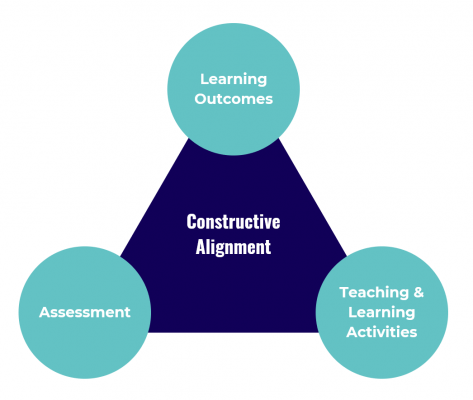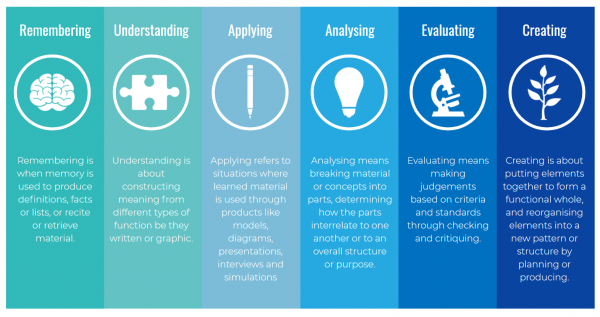Constructive alignment
What is it?
The constructive alignment principle from Biggs and Tang (2011) * states that you need to set realistic and achievable objectives for your students. To help students reach these objectives, you need to design teaching and learning activities that are in line with the learning objectives. Along the way you need to make sure that students are reaching the learning objectives by assessing them with assessment formats that target the learning objectives. Your course is aligned if your learning objectives, teaching and learning activities, and feedback and assessment methods, are all on the same level and about the same content.

* Biggs, J., & Tang, C. (2011). Teaching for quality learning at university. McGraw-hill education (UK).
How to use it?
Being explicit in what you expect students to be able to do with the skills and knowledge that are discussed in a course, helps students to focus their attention to relevant aspects of the course and lessons. It also helps you identify the most important elements of your course or lesson.
Some suggestions for implementing constructive alignment in your course:
- Before you start, (re)define clear and measurable learning objectives. What should your students know and what should they be able to do after your lesson and/or course? You can use the Learning Objective Generator to help you (re)formulate the objectives.
- Think about how academic development within your program, containing skills, attitudes, and personal development goals, are represented and practiced. Although these academic objectives might not always be explicitly trained, they are part of the graduate attributes of a study program.
- Keep your learning objectives in mind when you decide what type of assessment you want to use, because some kinds of learning objectives are a better fit for certain forms of testing than other kinds.
- Before you start planning and preparing, consider which activities students should do to reach the objectives that are set. Make sure to offer variety and complexity, ensuring the academic rigor Leiden University is known for.
- Make room in your course and/or lesson to discuss the learning objectives. By clearly connecting your lessons to the intended objectives students are made aware of what they can expect to learn and what they will be assessed on. If students are aware they are working on reaching the learning objectives, it helps them to focus better during lessons.
For more information about constructive alignment, you can watch this video on YouTube by RISBO (EUR).
